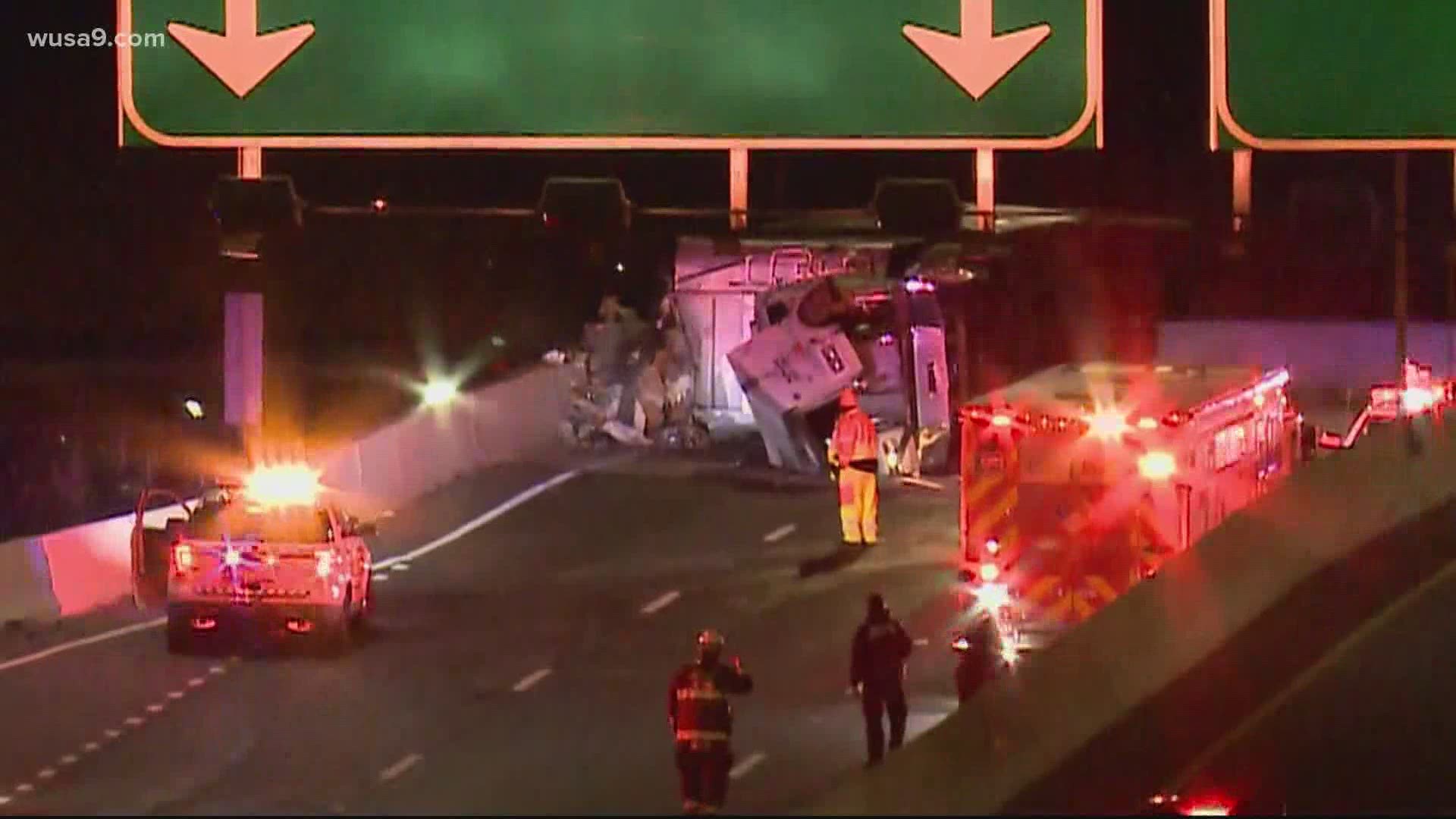BETHESDA, Md. — Maryland is struggling to stop a wave of truck crashes at the so-called "Big Curve" where the I-270 spur merges with the Capital Beltway. Maryland State Police said 36 commercial vehicles have crashed in that area since the pandemic began.
Transportation leaders are trying to convince truckers to slow down, given the high volume of injuries from crashes at the curve since March. Miraculously, no one has been killed so far. However, the fear is that if police and highway officials can't figure out how to stop this epidemic of collisions, it's just a matter of time before someone will lose their life.
There have been jack-knifed tractor-trailers hanging from flyovers, jersey walls shattered, trailers broken loose and rolling into the roadway and numerous traffic jams.
"I think what we've seen in the last couple of months has been extraordinary," Pete Piringer, spokesman for Montgomery County Fire Rescue Services, said.
Highway officials said with less traffic on the road because of the pandemic, some truckers have felt like they have a license to speed. The recommended speed is still 50 miles per hour when negotiating the "Big Curve," regardless of how many cars are on the road. Any faster than that, especially after a rainstorm, and trucks risk losing control.
"We're urging every passenger, every driver and every trucker to slow down and pay attention to the signage," Sherry Christian, spokeswoman for the Maryland State Highway Administration, said.
Highway workers have put up electronic signs warning truckers to slow down. State Police said they have issued 1,200 traffic tickets.
Officials are looking at what they might be able to do to re-engineer the road. But that could take years and get caught up in Gov. Larry Hogan's controversial plan to widen I-270 and the Beltway.
Just in one week at the end of April, Maryland State Police said troopers cited 301 people for speeding between 80 and 100 miles per hour. They cited nine people for driving even faster than 100 mph.


